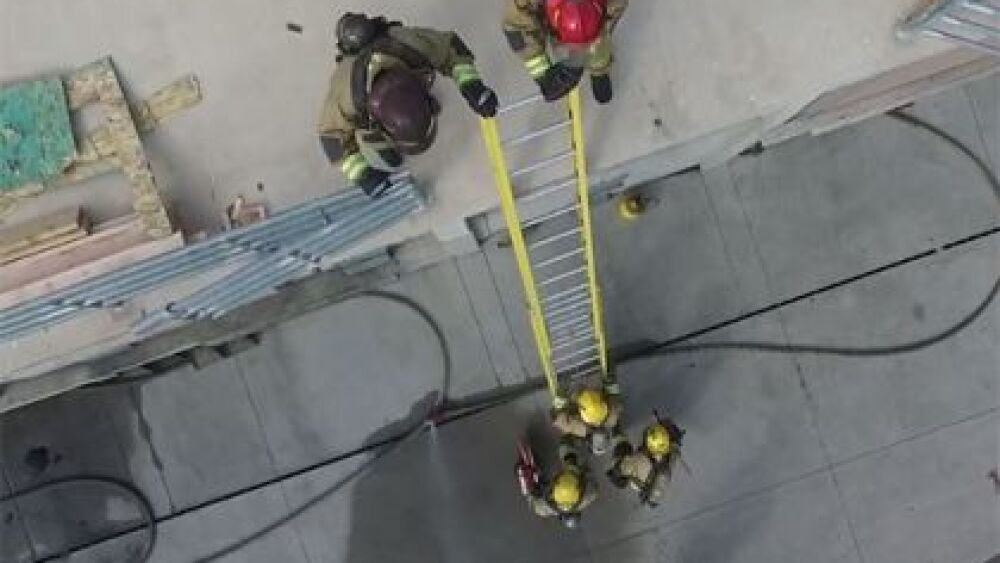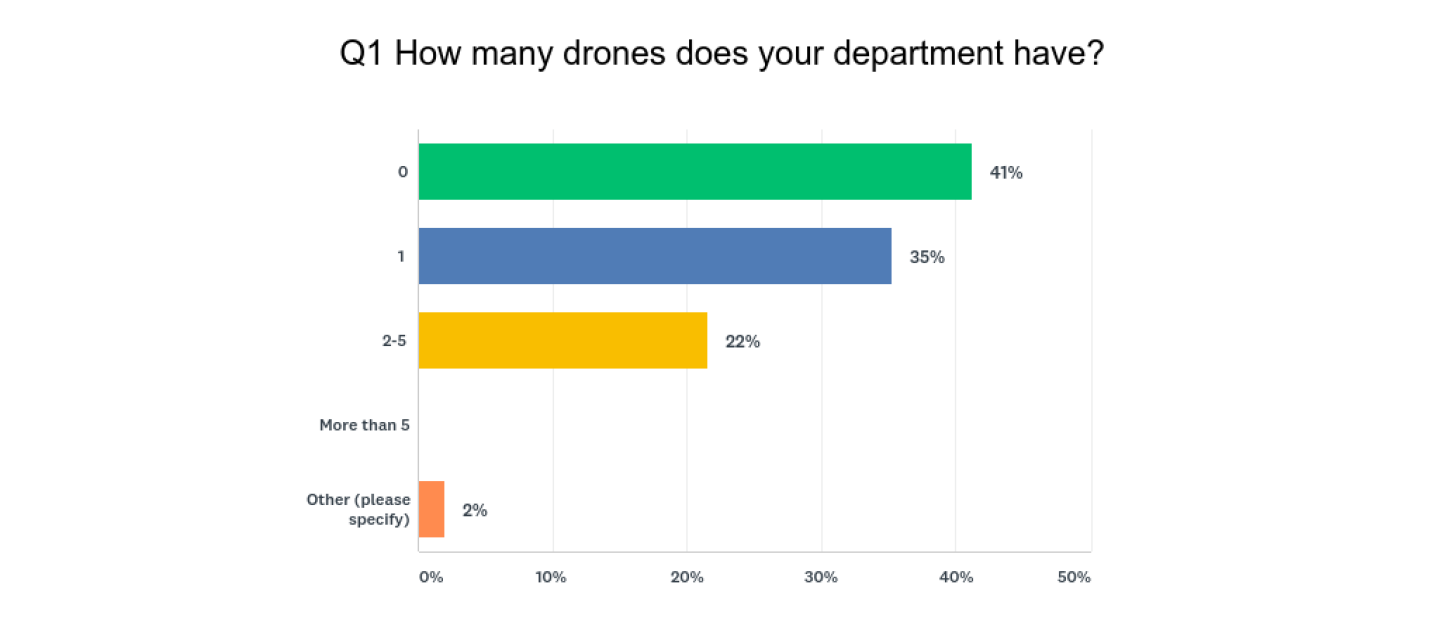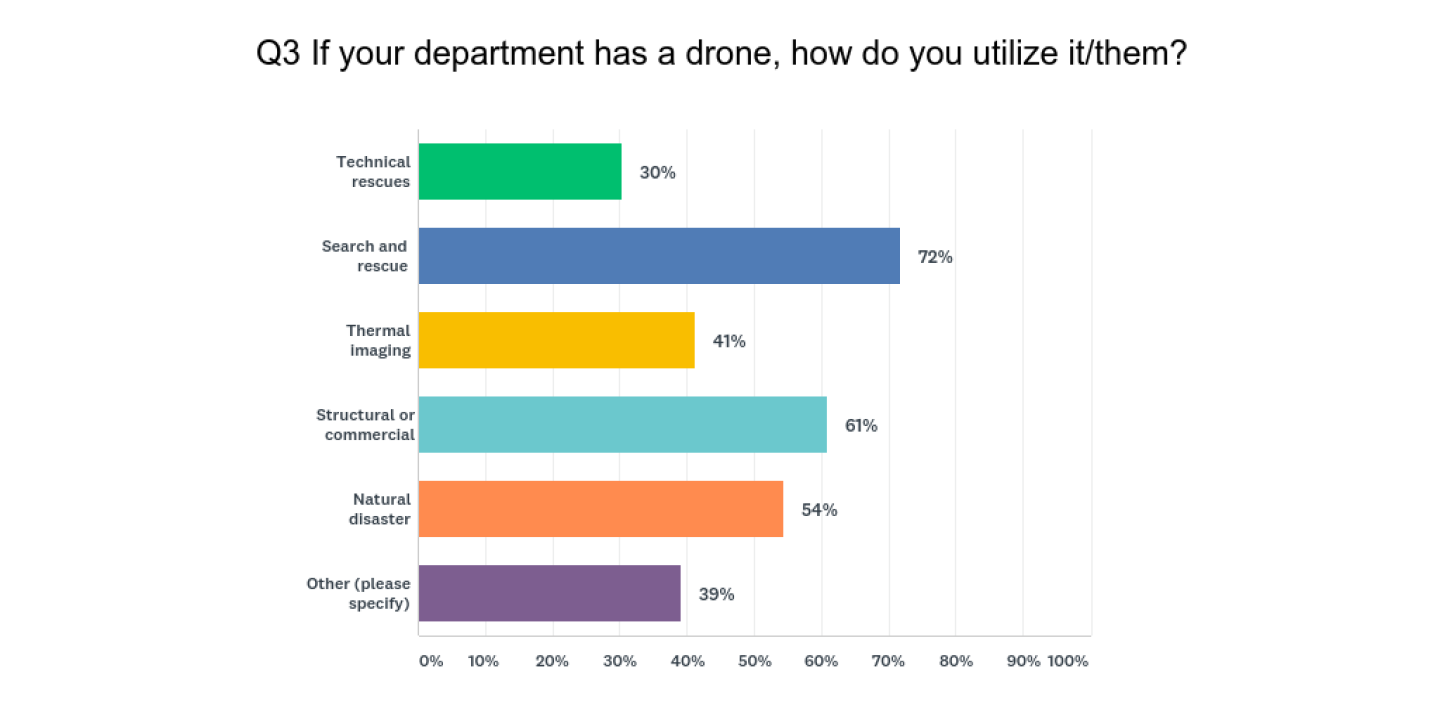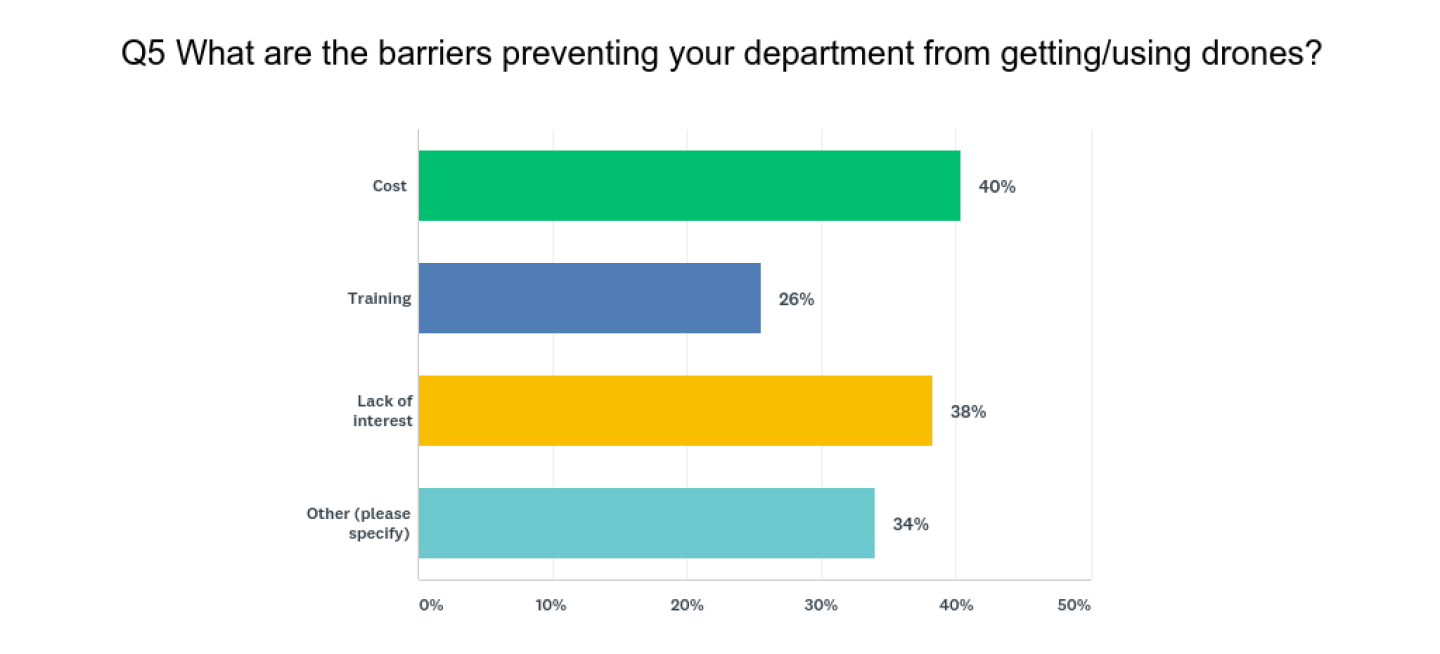With public safety usage and applications exploding, fire department drones are poised to be the next technology to redefine emergency response. FireRescue1’s special coverage series – Emergency response in the drone age – takes an in-depth look at considerations for fire departments looking to implement a UAS program.
The use of drones, or unmanned aircraft systems, is becoming more routine for departments around the world.
In Arizona, Mesa Fire is using drones to assist during search and rescue operations, respond to structural and commercial fires, and more. In L.A., LAFD crews recently deployed two drones for the first time while they battled the Skirball wildfire. There are many more examples of how fire departments are using drone technology to assist with everyday tasks and calls.
We created a survey to see how fire departments are using drones, what they’d like to use drones for and the barriers that might be preventing departments from getting or using drones.
Here’s a breakdown of the six questions that were asked and how departments can move forward with UAS implementation.
1. The majority of departments have one or more drones, but many have none.
When asked how many drones their department utilizes, 42 percent of survey respondents said their department does not own a drone. Thirty-six percent of respondents said their department owns at least one drone, and 20 percent selected the two-to-five range. Interestingly, one response noted that their fire chief privately owns a drone that their department uses.
2. Most departments are considering a drone purchase.
Almost 45 percent of respondents said their department is considering a drone purchase, and over 35 percent said that their department has no interest. One respondent reported their department is possibly considering a purchase, but there are budget constraints as well as usage concerns
3. Drones are largely used for search and rescue operations.
When asked what departments use their drones for, we categorized them in these operational uses:
- Technical rescues.
- Search and rescue operations.
- Thermal imaging for hot spots.
- Structural or large commercial fires.
- Natural disaster response.
- Other.
Over 70 percent of respondents said they use their drones for search and rescue operations, and 60 percent use them for structural or large commercial fires. With the magnitude of natural disasters last year, over 50 percent of respondents said they use drones for natural disaster response. The lowest response, however, was 31 percent of respondents claiming drones for technical rescue use. Other respondents said their drones are used for wildland fire overhead, hazmat, investigations, swift water rescues, assisting law enforcement on scene and to help assist with building inspections.
4. Most wish they could use drones when it comes to thermal imaging for hot spots.
Almost 60 percent of respondents said they wish their departments could utilize drones for thermal imaging of hot spots. Structural or large commercial fires and natural disaster response were tied for second place – at over 48 percent – with search and rescue operations and technical rescues coming in for third and fourth, respectively. Other respondents mentioned that they wish they could use drones for pre-planning, mapping large wildfires and hazmat incidents.
5. Cost is preventing departments from using drones.
It’s no secret that drones are expensive, and it’s no surprise that most respondents claimed cost as their main problem for not obtaining a drone for their fire department. Forty percent said cost was the main barrier in preventing their department from getting and using drones. Moreover, 38 percent said there was a lack of interest from leadership and 25 percent said training was their main barrier. Other respondents said regulations for use, legal issues and the time involved with developing a program are barriers that are preventing their departments from getting and using drones.
6. Departments want to know about how to get a certification in order to fly a drone.
A majority of respondents wanted to know more about certification requirements. Some of the questions asked include:
- How does a department get a certification to fly a drone?
- How many departments have COAs?
- How many departments have certified pilots?
- How many departments have waivers?
- What’s the process for training fire departments for the FAA certification?
- How do departments decide on whether to apply for a COA or license pilots individually under Part 107 rules?
In Robert Avsec’s article about what to know before buying a drone, he mentions that a fire department within a local government can operate a drone under the small UAS rule and must follow all rules under 14 CFR Part 107, including aircraft and pilot requirements. As a second option, departments could also obtain a blanket public certificate of waiver or authorization (COA). The permit, Avsec said, would allow the department to operate its drone within Class G airspace, engage in self-certification of its pilots and the option to obtain emergency COAs under special circumstances.
Do your research
Before your department buys a drone, it’s imperative to understand all of the intricacies, requirements and certifications required to utilize a UAS. As Avsec mentions in his article, all departments must:
- Research, research, research. You want to get the right make and model for your department.
- Find a reputable company and get a flight demonstration.
- Star the process to acquire the COA from the FAA.
- Develop a standard operating guideline for the care, maintenance and use of the drone.
Drones are still up-and-coming on most apparatus around the world. However, with a little bit of research, preparation and following the proper requirements, your department will be able to get an unbeatable eye in the sky view in order to continue serving your community and protecting lives and property.



















